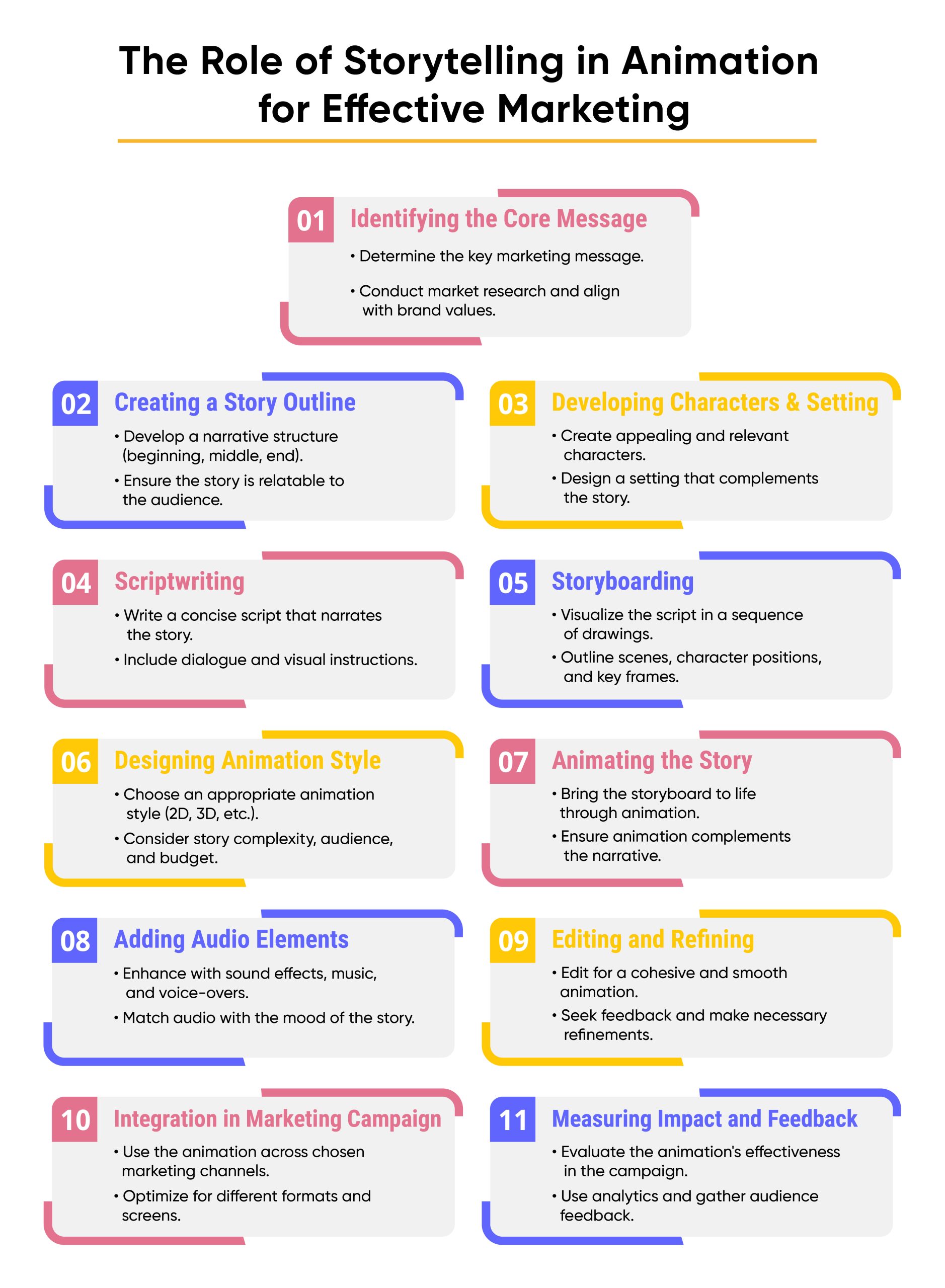Discover Interactive Marketing Animation Examples

Welcome to the exciting world of Marketing Animation Examples! With this detailed guide, you are going to explore the dynamic impact where marketing meets the creativity of animation. Get ready to explore how animation can transform your brand’s message into a captivating story that resonates with your audience.
The Power of Animation in Marketing
Animation isn’t just for kids; it’s a powerful tool in the marketer’s arsenal. Here’s why:
- Visual Appeal: Animation grabs attention. It’s colorful, lively, and can turn a mundane topic into something engaging.
- Emotional Connection: Animated characters and stories can evoke emotions, creating a deeper bond with your audience.
- Complex Simplified: Difficult concepts? Animation can break them down into digestible visuals.
- Memorable Content: People remember what they see more than what they read or hear. Animation makes your message stick.
Crafting Your Animated Marketing Strategy
Before jumping into animation, it’s crucial to align it with your marketing strategy. Here’s how:
- Define Your Goal: Are you aiming to increase brand awareness, explain a product, or drive sales? Your goal will shape your animation.
- Know Your Audience: Tailor your animation style to your audience’s preferences. Kids? Go colorful and fun. Professionals? Sleek and sophisticated.
- Choose the Right Type: From 2D, 3D, stop motion to motion graphics, pick the style that best conveys your message.
- Storytelling is Key: Every great animation tells a story. Make sure yours has a clear beginning, middle, and end.
Innovative Marketing Animation Examples
Let’s explore some innovative marketing animation examples that have made a mark:
- Explainer Videos: Dropbox’s simple animated explainer video helped skyrocket their user base. It was clear, engaging, and explained their service perfectly.
- Brand Films: Google’s heartwarming animated stories showcase their products’ impact on people’s lives, creating an emotional bond with viewers.
- Social Media Animations: Starbucks uses animated posts for seasonal promotions, making their social media presence vibrant and eye-catching.
Animation Techniques for Different Marketing Channels
Website and Landing Pages
- Homepage Animations: Capture visitor attention instantly.
- Product Demos: Show your product in action, animated for clarity.
Social Media
- Animated Ads: Stand out in the social media feed.
- GIFs and Short Clips: Ideal for quick, impactful messages.
Email Marketing
- Animated Headers: Boost email engagement.
- Infographic Animations: Turn data into captivating stories.
Advertising
-
- TV and Online Commercials: Narrate your brand story.
- Billboard Animations: Grab attention in public spaces.
Incorporating Storytelling in Marketing Animations
Storytelling is a timeless art that resonates deeply with human emotions and experiences. When it is about marketing animation examples, storytelling isn’t just a tool; it’s the essence that breathes life into your message. Here, we have to look deeper into the significance of storytelling in marketing animations and provide actionable insights to weave compelling narratives into your animated content.
The Magic of Storytelling in Animations
- Emotional Connection: A good story in animation can transcend mere visuals, striking an emotional chord with the audience. When viewers connect emotionally, they’re more likely to remember and respond to your message.
- Brand Identity Reinforcement: Stories can encapsulate the values and ethos of your brand, creating a strong identity that audiences can relate to and remember.
- Engagement Beyond Features: While highlighting product features is important, a story shifts the focus to the experience and benefits, making the animation more relatable and engaging.
Crafting a Compelling Narrative
- Identify the Core Message: Begin by writing down the main point you want to make. This could be about your brand’s value, a product’s unique selling proposition, or a call to action.
- Create Relatable Characters: Develop characters that reflect your target audience or embody your brand. Characters act as the bridge between your message and the viewer, making the story more relatable.
- Structure Your Story: A classic narrative structure – with a beginning, middle, and end – is crucial. Introduce the setting and characters, present a challenge or conflict, and then provide a resolution, ideally linked to your product or service.
- Emphasize the Conflict and Resolution: The conflict in your story should highlight a problem your audience faces, while the resolution should position your brand or product as the solution, thus creating a direct link between the viewer’s needs and your offering.
- Incorporate Emotional Elements: Use emotions like humor, joy, surprise, or even sadness to make your story more engaging. Emotional content is more likely to be shared and remembered.
Visual Storytelling Techniques
- Color and Design: Use colors and design elements that align with the mood of your story and brand identity. For example, warm colors can evoke feelings of happiness and optimism, while cooler tones can convey calmness and professionalism.
- Animation Style: Choose an animation style that complements your story. A complex, detailed 3D animation can be ideal for a high-tech product, while a simple 2D animation might better suit a heartwarming, personal narrative.
- Pacing and Timing: The rhythm of your animation should match the flow of your story. A fast-paced animation can convey excitement, while a slower pace can be used for stories that need more contemplation or emotional depth.
Incorporating Sound in Storytelling
- Voiceover and Dialogue: A well-written script and professional voiceover can greatly enhance your story’s impact. The tone and pace of the voiceover should match the mood of the animation.
- Music and Sound Effects: Background music and sound effects play a crucial role in setting the overall tone of the animation. They can enhance the emotional response and help emphasize key moments in the story.

The Anatomy of a Successful Marketing Animation
| Element | Importance | Example |
| Story | Heart of animation | A journey of a character overcoming a problem |
| Characters | Relatable and memorable | Friendly mascot or a representation of your target audience |
| Voiceover | Sets the tone | Professional, friendly, or quirky, depending on your brand |
| Music and Sound Effects | Enhances the mood | Uplifting tunes for positive vibes |
| Call to Action | Drives user engagement | “Sign up today” or “Learn more” prompts |
Integrating Animation with Overall Marketing Strategy
- Consistency is Key: Your animations should complement your brand’s overall tone and style.
- Multi-Channel Approach: Use animation across different platforms for a cohesive marketing campaign.
- Measure and Optimize: Track engagement and tweak your strategy for better results.
Overcoming Challenges in Marketing Animation
- Budget Constraints: High-quality animation can be costly, but there are cost-effective options like templates or simpler animation styles.
- Time-Intensive: Quality animation takes time. Plan ahead to align with your marketing timeline.
- Finding the Right Talent: Hiring skilled animators or finding the right agency is crucial for a successful output.
Animation: The Future of Marketing
The future of marketing is undoubtedly intertwined with animation. As technology evolves, we’ll see more immersive experiences like AR and VR animations, providing even more exciting opportunities for marketers to connect with their audience.
Conclusion
Leveraging marketing animation examples is not just about being trendy; it’s about creating a deeper, more engaging connection with your audience. Whether you’re a small startup or a large corporation, animation can significantly enhance your marketing efforts. Embrace this creative journey, and watch your brand story come to life like never before!
FAQs
Q 1: What's the average cost of creating a marketing animation?
The cost varies widely based on complexity, length, and style. Explainer videos can range from a few hundred to several thousand dollars.
Q 2: How long should a marketing animation be?
Ideally, keep it under 2 minutes. Attention spans are short, and concise animations perform better.
Q 3: Can animation work for any industry?
Absolutely! Every industry can find a creative angle to use animation, from healthcare to technology.
Q 4: How do I measure the success of my animation campaign?
Track engagement metrics like views, shares, click-through rates, and conversion rates.
Q 5: Is it better to create animation in-house or outsource?
It depends on your team's skills and bandwidth. Outsourcing can save time and ensure professional quality, but in-house production gives more control.










